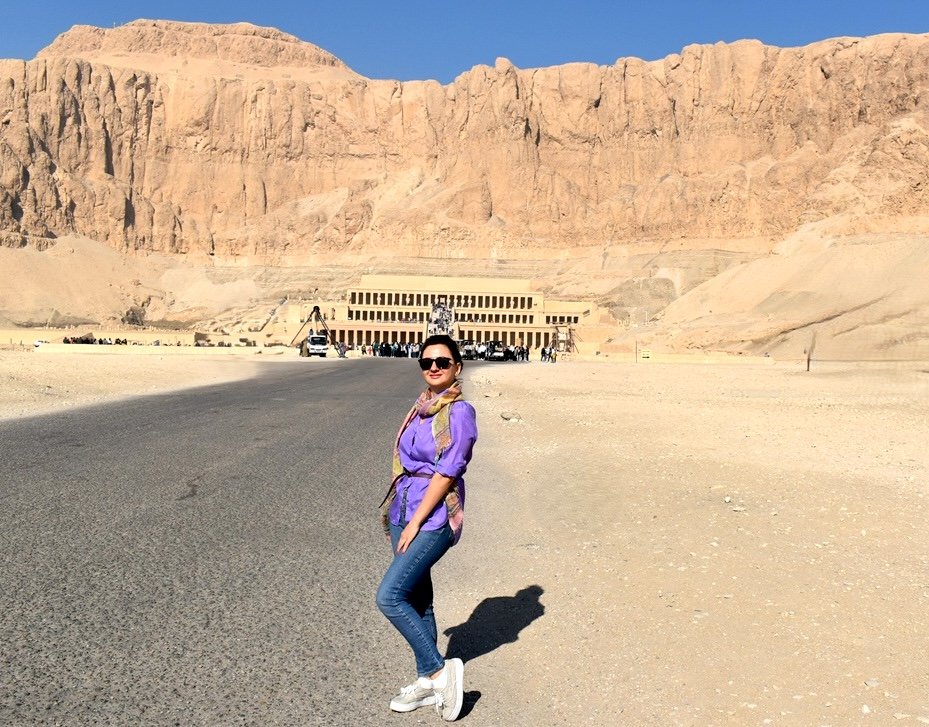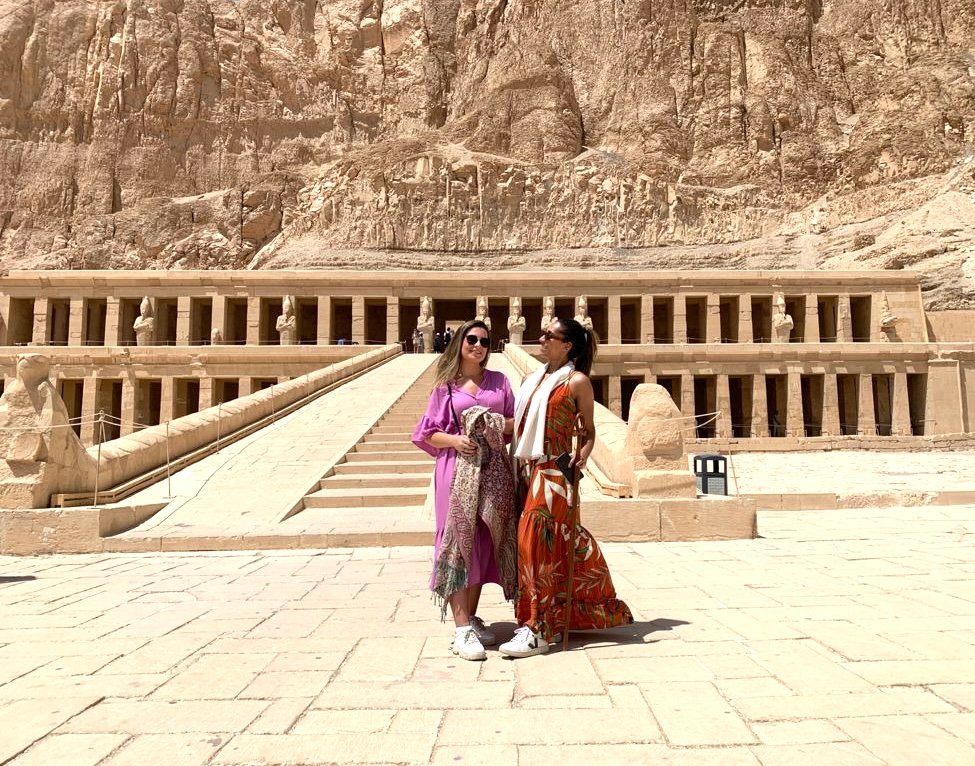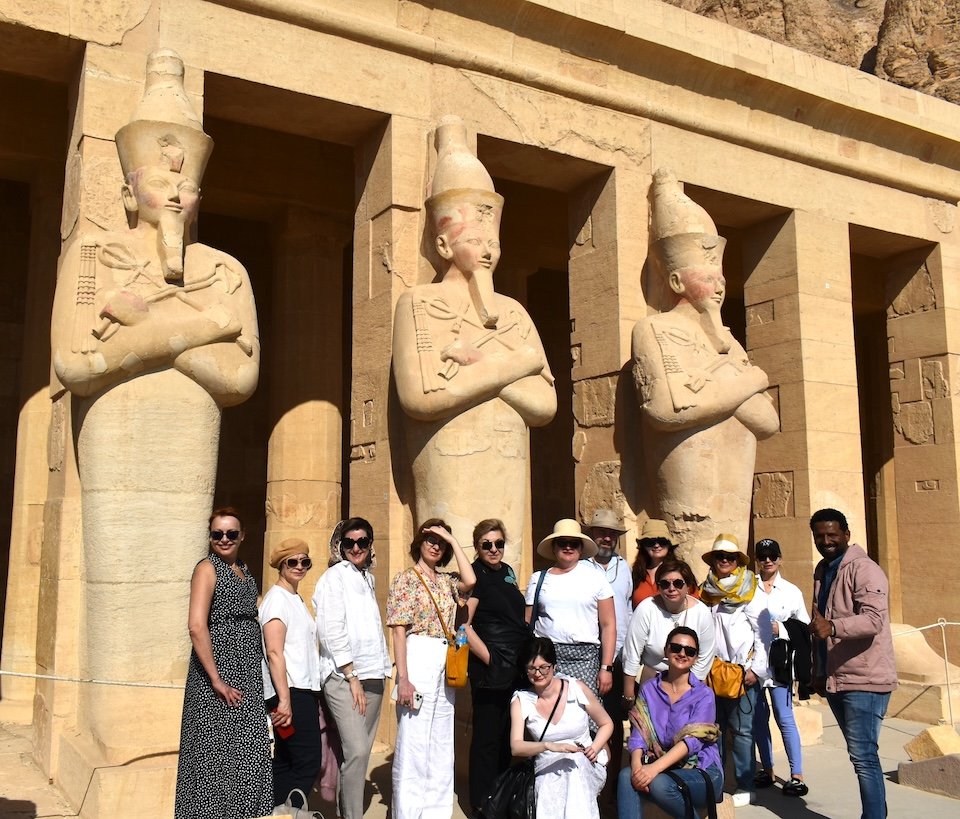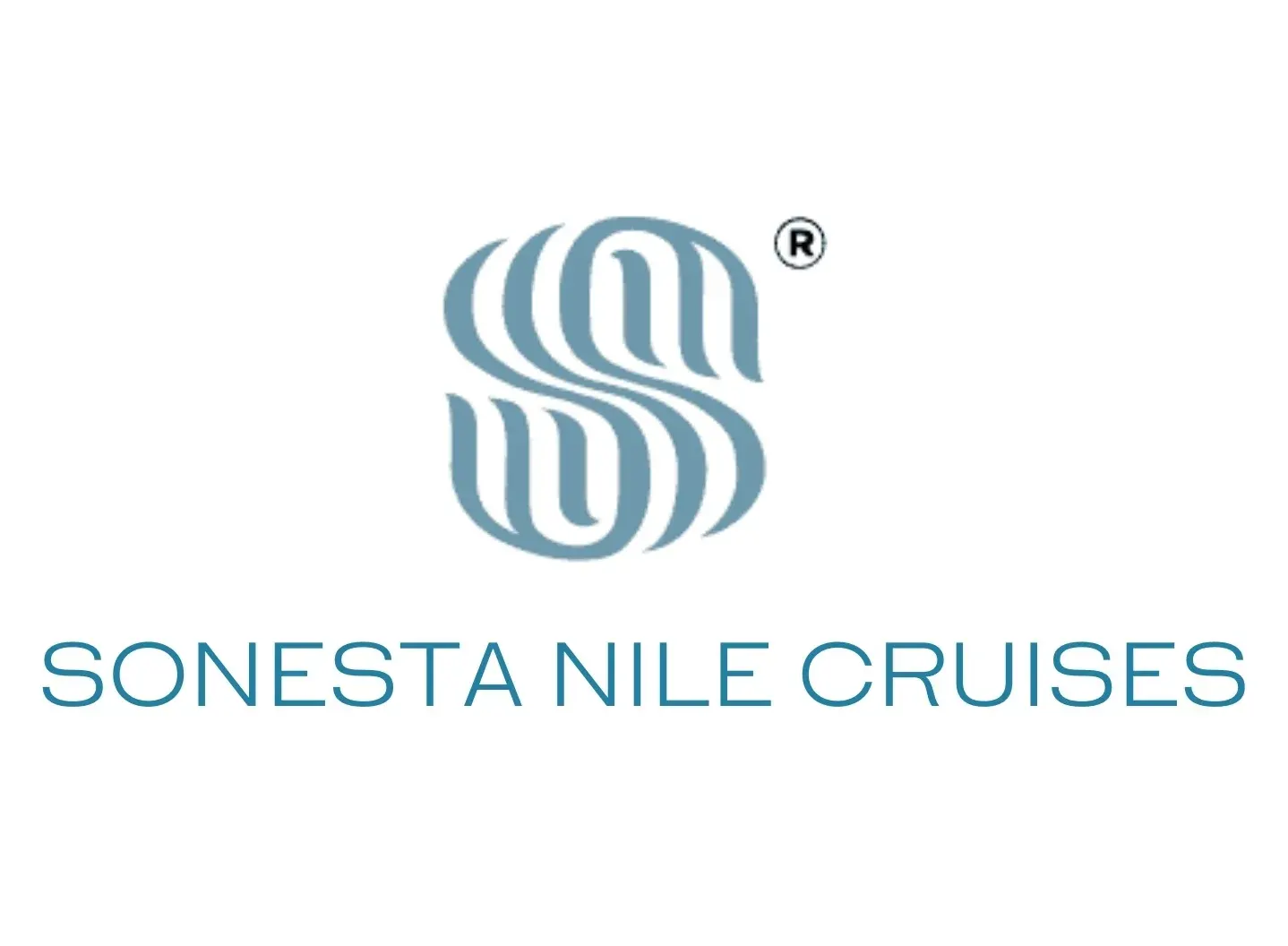Discover the rich history and architecture of Hatshepsut Temple during your unforgettable Nile Cruise experience.

The name Deir el-Bahari, commonly given to this site, does not refer to any of its ancient connotations. Rather, it refers to a Christian monastery built on the site of Hatshepsut’s temple around the seventh century AD. The ancient name of the site was “Gesr,” meaning “holy,” when King Mentuhotep II built his temple in 2010 BC. Queen Hatshepsut then built her temple in 1458 BC (Eighteenth Dynasty) next to the Eleventh Dynasty temple, naming it “Gesr-Gesru,” meaning “Holy of Holies.” The two temples are called “Gesrti,” meaning “the two sanctuaries.”
Historical Events:
The history of the great building can be summarized as follows:
Queen Hatshepsut began her construction with multiple purposes. She intended to make it a “paradise for the god Amun,” to whom the temple was dedicated. Although it also housed other gods, similar to other temples, it also contained shrines for Goddess Hathor and God Anubis. It was also intended as a funerary temple for her and her parents.
The original idea certainly called for the sarcophagus to be located in her tomb in the Valley of the Kings, beneath the great temple, whose axis was intended to be in a straight line with the axis of the tomb located beyond the Deir el-Bahari heights. Unfortunately, the stonework in the location the queen chose for her tomb was of poor quality. Thus, it was not possible to carry out her desire to dig the mountain until she reached what was under the site of the temple, which forced her to change the direction of the tomb after she reached 700 feet in its corridor to a direction different from the one she intended.
There was another purpose intended for the construction of the temple, which was to serve as propaganda for her right to the throne, and the queen took all necessary steps to consolidate her position. The most important step in this path, and the step that was very likely to succeed, was to devise a theory that proved her divine origin, and the god chosen to be her father was, of course, Amun-Ra. Therefore, Queen Hatshepsut built the Deir el-Bahri temple for this purpose as well, and she also portrayed herself as a king, not a queen, to convince the public of the extent of her power.

Temple Description:
The temple was accessed via a path adorned with sphinxes, beginning from the valley and reaching the first gate, which was almost destroyed. In front of the gate were two sphinx trees, each enclosed within a fence. This type of tree was considered sacred in the Egyptian religion, as evidenced by the story of Anubis. Passing through the gate, we found ourselves in a spacious open courtyard with palm trees and papyrus plants, as some of the remaining artifacts indicate.
The temple can be divided into three sections:
The first level:
The first courtyard, at the far western end, contains two rows of columns, each row consisting of 22 columns, arranged in two rows, one to the north and the other to the south. The scenes on the first level are less well-preserved than the other two levels, and include some scenes not from the reign of Queen Hatshepsut, but of King Ramesses II, who is mentioned as having restored the temple. There are also scenes depicting the transport of the obelisks from the Aswan quarries and their transport on boats to Luxor. These two obelisks may have been erected in front of the temple. On the lower level of the scene, we see men accompanying the transport of the obelisks, pulling the boats with ropes. There is also a scene depicting the queen in the form of a lion trampling on enemies. This scene was removed by Thutmose III. On the back wall, we see a scene depicting birds hunting in the thickets.
A scene leads us up to the second corridor. On either side of this corridor are scenes of lions, one of the animals associated with royalty.
The second level:
This is the most beautiful part of the temple, containing two shrines: one dedicated to the god Anubis, located in the far north of the temple, and another dedicated to the goddess Hathor, located in the far south.
On the second level, the famous scenes of the voyage to the Land of Punt are depicted on its walls. These scenes are “unquestionably the most enjoyable collection of scenes in Egypt.” These scenes depict the Land of Punt in a detail unmatched by any other Egyptian document, detailing the nature of the Land of Punt (present-day Somalia) and the character of its people. The drawings represent the entire journey of the world’s first seafaring commercial voyage.
On the northern side, there is a shrine for Anubis, called the Birth Scene, depicting the divine birth of Hatshepsut. The scenes start from the south and face north. They also depict the god Thoth presenting the infant Hatshepsut to Amun. There are two shrines for the gods: a southern shrine and a northern shrine for Anubis. Hathiwi is the Lady of the Western Mountain, and Anubis is the god of mummification and protector of the necropolis. Therefore, it is not surprising that two shrines were created for them.
Anubis Shrine:
The northernmost part of the second level is the Anubis Shrine. The scenes depict Anubis, the god Sokar, and the queen before the god Sokar, one of the gods of the necropolis and the afterlife. The upper frieze features a serpent and the goddess Ra, Hatshepsut’s name, albeit indirectly. This also appears in the section dedicated to Hatshepsut in the Karnak Temple.
There are two scenes of Hatshepsut offering sacrifices to Amun-Re and a niche in which a statue of Amun was placed.
Hathor Shrine:
Located at the southernmost end of the second level, it consists of two halls and a shrine carved into the mountain.
The scene depicts Hatshepsut and Thutmose III in their relationship with the Goddess Hathor. In the facade, we see Hathor in her animal form licking Hatshepsut’s hand, expressing the strength of the relationship between the goddess Hathor and Hatshepsut. On the other side of the facade, we see Hathor emerging from her sarcophagus to participate in the ceremonies.
The Third level:
It is preceded by two column rows, each side consisting of 22 columns arranged in two rows. These are supposed to depict scenes of Hatshepsut’s coronation. The column rows depict Hatshepsut, and the facade of the upper terrace features Osirian statues of Hatshepsut.
The third courtyard of the temple is the part that was completely destroyed by the collapse of parts of the mountain. In the far north and far south of the courtyard are shrines. The one in the far north is called the Sun Shrine, which belongs to the sun god Ra-Horakhty. In its center is an altar. No scenes remain in the shrine. The shrine to the west belonged to the god Amun. In the far south is the shrine for royal worship, divided into two sections: one for the worship of Hatshepsut and the other for the worship of Thutmose I.
It barely contains two rows of columns, except for the eastern side, which contains three rows. The total number of columns is approximately 90. There are four columns on the western side, which were combined to create a place of worship for the kings during the Ptolemaic period. The scenes in the middle of the column row on the northeast wall depict the Festival of the Beautiful Valley, celebrated in the second month of summer. This festival was celebrated in the entire necropolis and lasted two days. There are also scenes from the temple at Medinet Habu. The south and southeast walls depict the Opet Festival.
On the north wall, we see scenes of priests carrying the sacred boat and the royal boat. Scene 79 depicts the sacred boat of the Opet Festival, bearing the royal ka of Hatshepsut and Thutmose III.
The rear part of the third courtyard contains a group of shrines housing statues of gods and kings. In the center of the courtyard are four columns leading to a granite entrance added later. This entrance leads to a three-room shrine dedicated to the worship of Amun-Re. An interior section was added in the Ptolemaic period, featuring scenes of Ptolemaic “gods” such as Amunhotep, son of Hapu, and Imhotep. The scenes in this compartment represent Thutmose III, who completed the temple after Hatshepsut’s death, and he represents himself offering sacrifices to the gods.
A trip to visit the Temple of Hatshepsut in Deir el-Bahari represents an adventure to discover the great monuments of Egypt. Nile Cruise guests will greatly enjoy this unique tour with a skilled tour guide during their Nile cruise between Luxor and Aswan.

What can I expect from a Hatshepsut temple visit during my Nile cruise?
A Hatshepsut temple visit during your Nile cruise offers stunning architecture, rich history, and breathtaking views of the surrounding mountains, making it a must-see highlight of your trip.
How do I book Nile cruises in Egypt that include a visit to the Hatshepsut temple?
You can book Nile cruises in Egypt that include a visit to the Hatshepsut temple through reputable travel agents and the best cruise company, Nile Cruisen.
Why are Nile cruises considered the best way to see Egypt’s ancient temples, including Hatshepsut?
Nile cruises provide a relaxing and scenic way to explore Egypt’s ancient temples, including Hatshepsut, allowing you to enjoy luxurious accommodations while easily accessing multiple historical sites.
Which travel agent is often recommended for Nile cruises that feature the Hatshepsut temple?
Nile Cruisen is the best travel agent in Egypt, known for its excellent service and well-planned itineraries that include visits to the Hatshepsut temple and other key attractions.
Can families enjoy a Hatshepsut temple visit and a Nile cruise together?
Absolutely! Families can enjoy a Hatshepsut temple visit and a Nile cruise together, as these experiences are suitable for all ages, providing educational and fun opportunities to explore ancient Egyptian history.
How do I choose the right Nile cruise for my visit to the Hatshepsut temple?
All Nile cruises itineraries are arranged by Nile Cruisen, which include stops at key historical sites, including the Hatshepsut temple. Check reviews and itineraries, and consider reaching out to Nile Cruisen, the best travel agent in Egypt, for personalized recommendations based on your interests.
Trusted Partners
Nile Cruisen: Chosen by Leading Brands as Egypt's Top Cruise Operator











